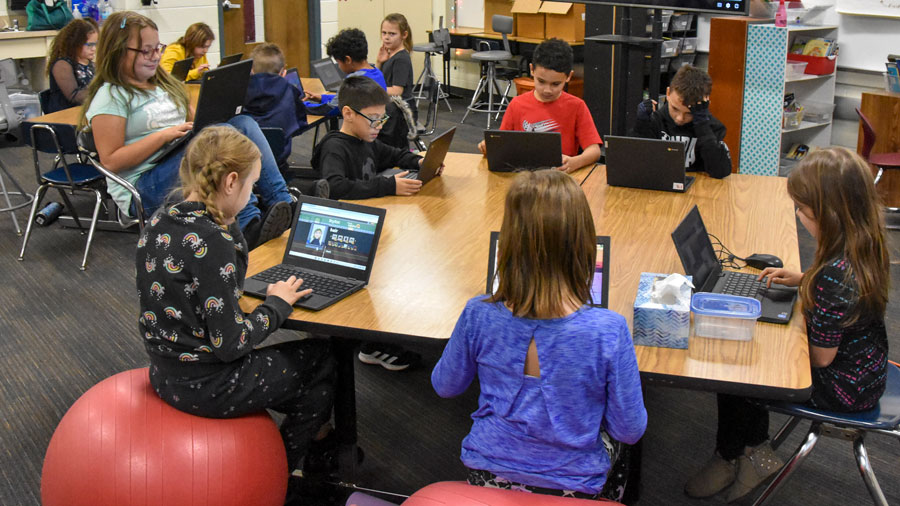Grandville — With the bass line of MC Hammer’s “U Can’t Touch This” thumping in the background, teacher Henry Stallings’ students lined up along the side of their classroom. As Stallings stood behind the video camera, he gave the cue and students began to shimmy into the frame.
But instead of doing Hammer’s signature “Hammer Dance” move, the East Elementary third-graders were busting out their best boogies while holding pool noodles in honor of … multiplication tables?
Stallings laughed, acknowledging the slight absurdity of it all.
“Third grade is when they start learning multiplication, and I know that’s a difficult thing for them as far as memorization of the multiplication facts,” he said. “We’ve got flash cards, and we’ve got computers, but what can I do to make it more engaging? I’ve got all these pool noodles sitting around my house, and I know they like YouTube and TikTok, so I start thinking, maybe this could work.”
“This” is a series of short (10-15 seconds) videos his students filmed to help them learn multiplication. In each clip, students dance across the frame holding pool noodles in the shape of numbers, a multiplication symbol and an equals symbol.

At the end, one student bops into view holding a blank whiteboard and pauses their dancing for a moment. Finally, the answer to the problem appears on the white board (thanks to the magic of Stallings’ video editing) and that student dances merrily away.
Stallings plays the videos regularly to help students practice their multiplication skills. He challenges them to shout out the answer to the problem dancing across the screen before the answer pops up on the whiteboard.
“I know that when you have physical activity, it engages their brain, gets the blood flowing and everything,” he said. “And they love seeing themselves on YouTube — they will watch that all day. So you’ve got the visual, the movement and daily practice — all that stuff together is another way to practice and memorize the (multiplication) facts.”
Potentially Endless Possibilities
Third-grader Deja Caldwell made her multiplication video debut in the “nines” set (9×1, 9×2, 9×3, etc.). She threw herself into the task and came up with several different dances, including bouncing on her knees, tossing her hair around and even pretending to limp. The end result, she said, was “really cool.”
“I really like being on YouTube with the dancing and figuring out these multiplication facts for the videos,” Deja said. “I really like multiplying because we get to learn new stuff and it’s really fun.”
Although Deja was already a math fan before filming, she said the videos have helped her learn multiplication rules better.
“It helps us remember what the answer is. And if people don’t know the answer, they can watch it again and then figure it out. And I really liked that we could dance for math.”
Given the success of this first foray into math videos, Stallings said there’s potential to do something similar for other math lessons. He said students are already asking when they can film something new.
“Now that I see that they do like it, that they’re catching on to it, maybe I have stumbled onto something here — maybe I can try doing it with addition or subtraction or fractions,” he said. “Its possibilities could be endless. Math is always the kids’ least favorite subject, for the most part, but maybe we found something to make them change their opinion about that.”











